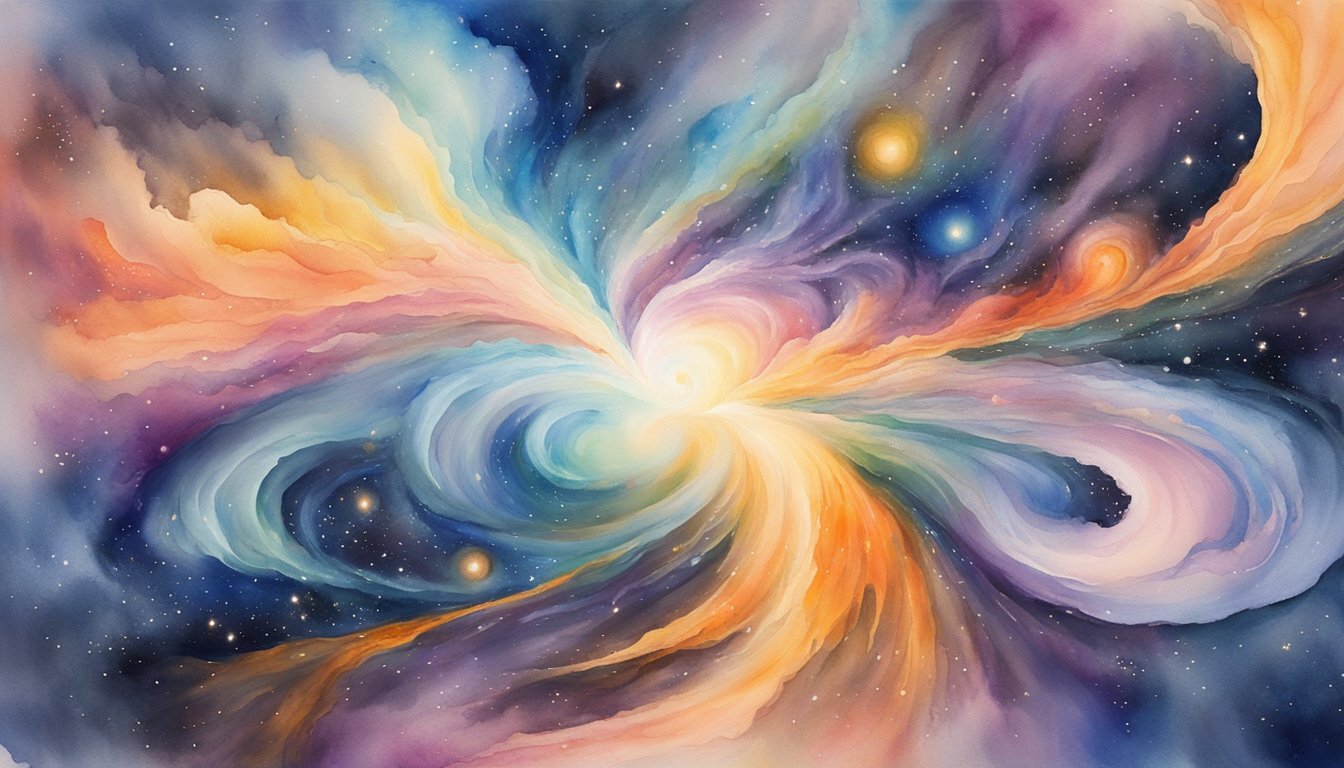Origins of the Big Bang Theory
The Big Bang theory describes the birth of the universe from an intensely hot and dense state. It is the prevailing cosmological model explaining the early development and shape of the universe.
Initial Hypotheses and Key Discoveries
Scientists initially grappled with the idea that the universe had a specific beginning. The concept picked up steam in the early 20th century when they observed that galaxies appeared to be moving away from each other. This discovery laid the groundwork for understanding that the universe has been expanding since its inception. The theoretical framework began to solidify with the serendipitous discovery of the cosmic microwave background (CMB) radiation by Arno Penzias and Robert Wilson. They stumbled upon the CMB, the afterglow of the Big Bang, which is consistent with the universe having emerged from an extremely hot and dense point.
Contributions of Georges Lemaître and Edwin Hubble
Belgian priest and astronomer Georges Lemaître first proposed the idea of an expanding universe, which he described as the “hypothesis of the primeval atom,” a concept that laid the groundwork for what is now known as the Big Bang theory. He theorized that the universe expanded from a single, primeval atom in a “Cosmic Egg” explosion. Complementing Lemaître’s theoretical work, American astronomer Edwin Hubble made a critical observation that galaxies were receding from Earth, implying the universe’s expansion rate. Hubble’s findings provided substantial observational evidence in support of Lemaître’s theory and further solidified the Big Bang as a scientific understanding of the universe’s origin.
From Singularity to Cosmic Expansion

In the tale of our universe’s dramatic beginnings, the focus often lands on an ambiguously defined event known as the Big Bang—it’s the zero hour where all cosmic journeys commence. From an unfathomable dense point, or “singularity,” sprang forth all the energy and matter that now fills the cosmos.
Early Universe Conditions
At the very start, following the Big Bang, the universe was a place of incomprehensible heat and density. Energy and matter were the same, indistinguishable in a form known as a plasma. It was during this period that the fundamental forces of nature—including electromagnetism and gravity—started to take shape and distinguish themselves as separate entities.
Inflationary Period and Its Implications
The universe didn’t just expand; it ballooned rapidly in an epoch termed “cosmic inflation.” This brief but critical phase saw space-time stretch faster than the speed of light, ironing out the wrinkles of the universe. Researchers study quantum gravity to understand this period better. Phenomena like magnetic monopoles were believed to have formed, but their scarcity today remains a puzzler for scientists.
Cooling and Formation of Basic Elements
As the universe continued to grow, the temperature dropped dramatically, allowing for the formation of basic elements. Nucleosynthesis is the process that forged atoms like hydrogen and helium in the universe’s fiery crucible. A soup of protons and neutrons began to move away from each other, no longer crushed into an undifferentiated mass. This eventually led to the complex structure of the universe we observe today, with vast voids and a web of galactic filaments.
Formation of Structure in the Universe

After the Big Bang, the universe underwent significant changes that led to the formation of all known cosmic structures. From a hot, dense state, it cooled and expanded, allowing matter to clump and form complex structures.
Development of Stars, Galaxies, and Larger Structures
The universe started off as a nearly uniform field of energy and matter. As it expanded, tiny perturbations in the density of matter began to grow, influenced by the force of gravity. These perturbations led to the formation of stars and galaxies. Hydrogen and helium gases clumped together, igniting to form stars. Stars would cluster via gravitational attraction, leading to galaxies.
Galaxies further congregated into groups, clusters, and eventually, sprawling larger-scale structures like superclusters and filaments. The Milky Way is one such galaxy that formed through these processes and is home to our own solar system. Within these galaxies, areas of intense gravity can lead to the creation of black holes.
Researchers study the cosmic microwave background for clues about the early universe, which, along with observations of redshifts in distant galaxies, helps them understand the rate of expansion and the large-scale structure of the cosmos.
Role of Dark Matter and Dark Energy
Dark matter and dark energy play crucial roles in the formation and evolution of the universe but in markedly different ways. Dark matter, which does not emit or absorb light, accounts for the unseen mass that influences gravitational forces within galaxies. It acts as a cosmic scaffold that attracts normal matter, helping to speed up the process of galaxy formation.
On the other hand, dark energy is a mysterious force that is driving the acceleration of the universe’s expansion. Researchers think that as much as 68% of the universe is dark energy, with dark matter making up about 27%, leaving only 5% as normal matter from which stars, planets, and we, humans, are made.
It’s amazing to reflect on the fact that everything from tiny asteroids to the largest of galaxies is interconnected, bound by forces that started to take shape nearly 13.8 billion years ago. They study phenomena like the cosmic microwave background to understand how the early universe looked and how it has evolved into the intricate cosmic web observed today, revealing the mysteries of the cosmos piece by piece.

